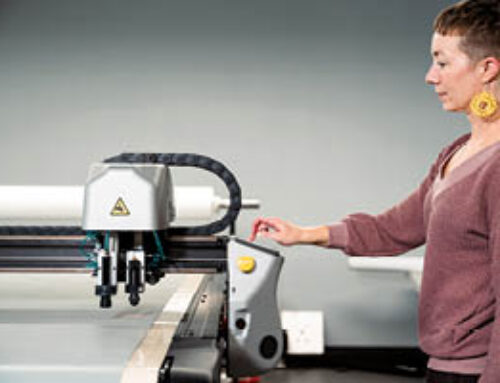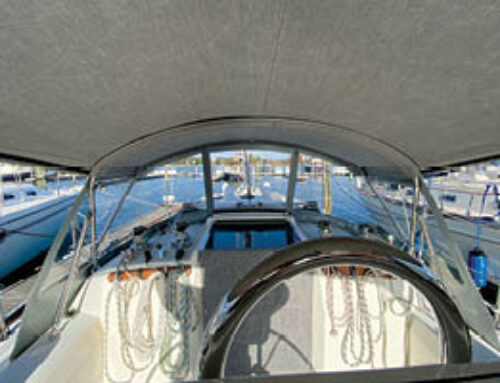Automotive upholstery trends

The textiles on floors, walls and windows in homes and commercial buildings often catch people’s attention. Now, automotive textile manufacturers and automakers are beginning to ask, Why not give people the same experience in their vehicles? Emerging trends in automotive textiles include environmentally friendly fabrics, flooring that is woven rather than tufted, and color and patterns (like stripes or one called “pebbles on a beach”) to add texture and interest to a vehicle’s interior. From floor mats to seats and door panels, consumers have choices.
European influences and lifestyle changes resulting from the pandemic lockdown both played a role in these trends. Many chose to literally take their home on the road (or water) with their RVs, boats or conversion vans. People used them to escape while remaining protected when presented with that surreal opportunity to work and attend school from anywhere. It was good for automotive textile companies, like Keyston Bros. and Siotech Corp., because it led to growth in reupholstering those modes of transportation.

“A growing trend we’ve seen since COVID is in van conversions, especially on the West Coast with Sprinter vans,” says Gloria Mei, regional manager for Sileather® North American Division, which is part of Siotech Corp. in Duluth, Ga.
Keyston Bros., headquartered in Roswell, Ga., noticed similar trends. “We saw an uptick with motorcycles, Sprinter vans/van conversions and boats,” says Brooke Kahn, senior vice president of marketing.
People socialized outdoors, so many customers updated their outdoor seating upholstery, along with changes to their boats’ upholstery or canvas covers, according to Kahn.

Keep it green
Customers want to know a company’s “green story.” David Owens, Corinthian Textile Solutions executive vice president over sales and product development, says, “A first question the OEMs [original equipment manufacturers] ask is ‘What are you doing to reduce your carbon footprint?’ or ‘What about ocean harvesting [of plastics]?’”
Corinthian, headquartered in Portland, Ore., and Dalton, Ga., works strictly with OEMs and produces automotive floor protection, like floor mats. In molded floor protection, according to Owens, the trend has been to move from tufted nylon products to nonwoven needlepunched polyester. Made from recycled plastic bottles, recycled polyester (rPET) molds better and costs less than nylon. Corinthian offers products produced from recycled items like those plastic bottles and industrial textile waste like fiber, trim and scrap fabric. That affords cradle-to-cradle recycling, so when a car owner wants a different floor mat, for example, the entire mat would then be recyclable.

Sileather® is a silicone leather product that simulates animal leather. Food-grade silicone coats cotton or polyester to produce an easy-to-clean, durable textile that is additive-free and environmentally friendly.
Mei says, “We’re new to the auto industry, working with OEMs since early 2017. Now, we are working to supply Sileather for the interior for one US-based OEM of electric vehicles [EV] and one China-based EV company for its current in-market car model, HiPhi Z.”
When it comes to sustainable carpet materials, Keyston Bros. has seen limited demand for its higher-priced full wool product or for other sustainable textiles it offers, which cost more. Price may be an important factor car restorers consider as they choose textiles for their projects.
Kahn describes three customer groups or sectors that Keyston Bros. serves. First is a customer with a tear in the car’s upholstery, for example, who wants it repaired with a matched fabric and thread so the repair is not visible.

A second group includes car owners who want something a little different than the OEM-provided upholstery. That may be accent thread colors or quilted fabrics for a middle seat panel.
The third type is customers who are restoring or renovating classic cars. They may want to bring the vehicle back to its original condition with fabrics that match the initial look or create a more souped-up or modern appearance by using alternative designs, styles or textiles.
“We don’t see a lot of changes in trends for fabric selection from the first group,” Kahn explains. “Trends now in the other two groups are with accents, like on door panels and seat inserts, or with quilting, which is big now.”
The pandemic provided time for carmakers to discuss and imagine possibilities with Corinthian about future trends for automotive flooring. With Corinthian’s advancements, it can work with designers to change a car floor from basic black-on-black to one that’s eye-catching with patterns, color, logos and more while also keeping safety and durability paramount. Corinthian’s backing system, for example, includes nonslip characteristics that other all-weather plastic floor mats may not have.
rPET is big in Europe, and both Owens and Corinthian general manager Soren Sorensen are confident this trend is on its way to U.S.-made vehicles too. According to Sorensen, rPET is already in the U.S. in molded floors, seat backs, trim, and cargo and trunk floors.

Old and new
Keyston Bros. was in business before autos were even invented (1868), while Sileather is a newcomer to the transportation space. Today’s demand for automotive textiles seems to have created room for both.
For Sileather, EVs sell to a customer base that is forward-thinking and likely to spend more on alternative and sustainable products. Sileather also offers a 100% recycled polyester backing, yet, Mei says, “Fewer customers choose it because it’s a bit more expensive than traditional polyester.”
Kahn foresees auto restoration of EVs, and thus demand for those textiles, in the future. What’s new today is the future’s vintage product.
“There is a sense of nostalgia around cars,” Kahn says. Using movies as a parallel, she explains, “For my dad’s generation, think James Bond movies and old-school classic cars like Porsches and Ferraris.”
For her generation, she references the Fast and Furious movies. “They are the fun racing stripe, Hot Wheels® cars.”
Kahn says, “Looking back, we notice trends that perhaps we didn’t in real time, and we’ll always have people who want to remember the vintage cars of the past. They’ll want to restore the vehicles.”

A new alternative fabric like Sileather might be considered a luxury item, which may affect whether an average auto restorer would choose it. Perhaps that will be different in time.
“Alternative fabrics are still more expensive, but we’re not trying to be a luxury item,” Mei says. “We don’t have enough data today to project how that may change. We have seen customers moving away from genuine leather, also a luxury item.”

Supply and demand
During the COVID-19 pandemic, none of these three companies experienced dramatic supply chain issues. Keyston Bros. and Sileather have their own internal supply chains, and Corinthian has long-standing relationships with yarn and carpet manufacturers in its location in Dalton, Ga.—also known as the Carpet Capital of the World. Corinthian saw “dramatic cost increases during the pandemic, for labor, raw materials and transportation,” although Owens says costs have since stabilized.
Buyers today have numerous options, depending on their needs, preferences and environmental sensibility. For those who can and will spend more, sustainable options are readily available. Those who prefer more traditional textiles for less money can get them. While alternative textiles like rPET and Sileather may continue to grow in popularity, demand for traditional fabrics and genuine leather won’t go away anytime soon.
Linda “LW” McDonald is a freelance writer based in Minneapolis, Minn.
SIDEBAR: Marine versus automotive work: Should you expand?

by Megan Phillips
Many marine fabricators have considered expanding their upholstery work to include the automotive industry. Is it worth it? Ask Joe Gallagher, president and founder of TopStitch Upholstery CNY and Street Dreams CNY Inc., which together provide complete automotive bodywork and mechanic services as well as marine, commercial, aircraft and home upholstery services in the same 30,000-square-foot facility in Syracuse, N.Y.
With 48 years of experience in both the marine and automotive upholstery markets, Gallagher says that expanding one’s business to a different market can have many pros and cons. It can be beneficial for businesses to diversify their services and enhance their skills and adaptability as it can lead to increased revenue, however, he cautions, there are also challenges such as “the need for additional training, investment in tools and potential competition in both markets.”
Pros and cons
Gallagher advises marine fabricators to weigh the pros and cons of expanding into the automotive market based on their business goals and resources. They should consider which skills they already have that could benefit them in automotive work, such as a knowledge of materials, patternmaking, attention to detail, interacting with customers and using tools and equipment.
Gallagher says it’s important to understand that there are also differences between automotive and marine work, including differences in design and structural considerations, regulations and in standards and ergonomics. “While marine upholstery will focus on UV rays and moisture, automotive upholstery is focused on design, comfort and ergonomics,” Gallagher says. “Grasping an understanding of these differences is essential to successful expansion.”
Regarding his companies’ work in both markets, Gallagher says there hasn’t been a significant shift in the percentage of work between marine and automotive. “We service both industries pretty much equally. Although the closure of shops in our area has increased our workload as we are one of the few shops still open,” he says.

Current design trends
Custom work has become more common in automotive projects, Gallagher says, as customers are interested in unique personalization. He says currently, simplicity and minimalism with bold, contrasting colors are popular trends. To accommodate these requests, marine fabricators will need the right technology, which includes CNC sewing machines, CNC perforation machines, CNC cutters, 3D printers and others.
Gallagher says he doesn’t necessarily have a strong preference for working on either a marine or automotive project. “Whether it is a custom Fountain boat interior or an original interior in a 1949 Woody Wagon, each project is different, and exploring my creative ideas within these projects all the way to the finished project is what I love to do.”
Megan Phillips is the assistant editor of Specialty Fabrics Review magazine.
 TEXTILES.ORG
TEXTILES.ORG 






